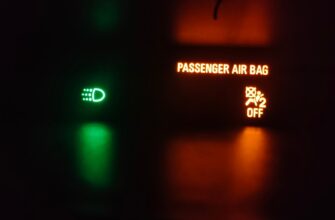- Best Hardware Wallet for Binance: Top Secure Storage Solutions in 2024
- Why Use a Hardware Wallet with Binance?
- Top 5 Hardware Wallets for Binance Users
- 1. Ledger Nano X
- 2. Trezor Model T
- 3. SafePal S1
- 4. Ledger Nano S Plus
- 5. Trezor Model One
- How to Choose Your Binance Hardware Wallet
- Setting Up Your Hardware Wallet with Binance
- FAQ: Hardware Wallets for Binance
- Can I stake BNB from a hardware wallet?
- Are hardware wallets compatible with Binance Smart Chain?
- What happens if I lose my hardware wallet?
- Can I use multiple hardware wallets with one Binance account?
- Do hardware wallets support Binance’s new tokens automatically?
Best Hardware Wallet for Binance: Top Secure Storage Solutions in 2024
With Binance dominating the crypto exchange landscape, securing your BNB, BEP-20 tokens, and other assets is non-negotiable. Hardware wallets provide military-grade protection by keeping your private keys offline, far from hackers. This guide explores the best hardware wallets for Binance users, balancing security, compatibility, and ease of use to safeguard your investments.
Why Use a Hardware Wallet with Binance?
While Binance offers robust security, exchanges remain prime targets for attacks. Hardware wallets eliminate this risk by:
- Storing private keys in an isolated, offline environment
- Requiring physical confirmation for transactions
- Shielding against malware and phishing attempts
- Giving you full control over your crypto assets
For Binance traders holding substantial BNB or interacting with Binance Smart Chain (BSC) dApps, a hardware wallet is essential for long-term security.
Top 5 Hardware Wallets for Binance Users
1. Ledger Nano X
The flagship device from Ledger supports 5,500+ coins, including BNB, BEP-20 tokens, and all major Binance-listed assets. Bluetooth connectivity enables mobile management via Ledger Live app.
- Pros: Large storage capacity, mobile-friendly, supports staking
- Cons: Higher price point than entry-level options
- Ideal for: Active Binance traders with diverse portfolios
2. Trezor Model T
Featuring a touchscreen and open-source firmware, Trezor Model T integrates seamlessly with Binance Chain Wallet. Supports BNB, BTC, ETH, and ERC-20/BEP-20 tokens.
- Pros: Intuitive interface, advanced passphrase protection, Shamir Backup
- Cons: No native Bluetooth, bulkier design
- Ideal for: Security-focused Binance users prioritizing transparency
3. SafePal S1
Officially backed by Binance Labs, this budget-friendly option features air-gapped QR code signing and direct Binance DEX integration.
- Pros: Affordable, camera-based secure transactions, compact design
- Cons: Limited third-party dApp support, no USB connectivity
- Ideal for: Binance beginners seeking exchange-optimized security
4. Ledger Nano S Plus
An upgraded version of the classic Nano S with expanded memory for 100+ apps. Fully compatible with Binance Wallet Extension and MetaMask.
- Pros: Cost-effective, improved storage, USB-C connectivity
- Cons: No Bluetooth, smaller screen
- Ideal for: Cost-conscious Binance users needing reliable BSC access
5. Trezor Model One
The original Trezor offers robust security for Binance assets at an entry-level price. Works with web wallets like MetaMask for BSC interactions.
- Pros: Proven track record, simple setup, open-source code
- Cons: Basic display, limited coin support compared to newer models
- Ideal for: Binance HODLers prioritizing fundamentals over advanced features
How to Choose Your Binance Hardware Wallet
Consider these critical factors:
- Binance Compatibility: Verify support for BNB, BEP-20 tokens, and Binance Chain
- Security Certifications: Look for CC EAL5+ (Ledger) or independent audits (Trezor)
- Connection Method: USB-C for desktop, Bluetooth for mobile trading
- Price-to-Features Ratio: Balance budget with needed functionalities
- Recovery Options: Ensure secure seed phrase backup processes
Setting Up Your Hardware Wallet with Binance
Follow these steps to secure Binance assets:
- Initialize device and record recovery phrase offline
- Install companion app (Ledger Live/Trezor Suite/SafePal)
- Connect wallet to Binance via WalletConnect or browser extension
- Transfer funds from Binance to your hardware wallet address
- Enable transaction confirmations on device for all withdrawals
Pro Tip: Always send a test transaction before moving large amounts.
FAQ: Hardware Wallets for Binance
Can I stake BNB from a hardware wallet?
Yes! Ledger devices support BNB staking via Trust Wallet or Binance extension. Trezor requires third-party interfaces like Exodus.
Are hardware wallets compatible with Binance Smart Chain?
Absolutely. Connect supported wallets (Ledger/Trezor/SafePal) to MetaMask configured for BSC to interact with dApps securely.
What happens if I lose my hardware wallet?
Your assets remain safe. Restore access using your recovery phrase on a new device – never share this phrase online.
Can I use multiple hardware wallets with one Binance account?
Yes. Binance allows withdrawals to any external wallet address. Manage multiple devices for diversified storage.
Do hardware wallets support Binance’s new tokens automatically?
Most require firmware updates. Check the manufacturer’s coin support page before purchasing new Binance listings.
Final Verdict: For seamless Binance integration, the Ledger Nano X offers unparalleled versatility, while budget-focused users should consider the SafePal S1 or Ledger Nano S Plus. Remember: Investing in a hardware wallet isn’t an expense – it’s insurance for your crypto future.








